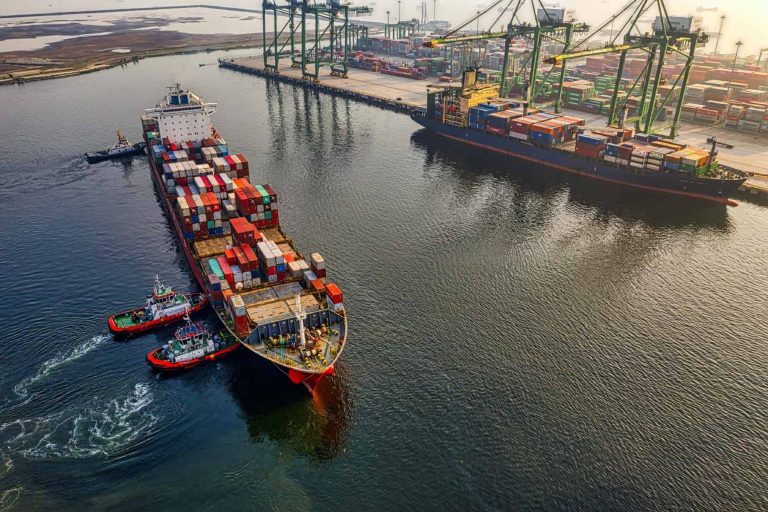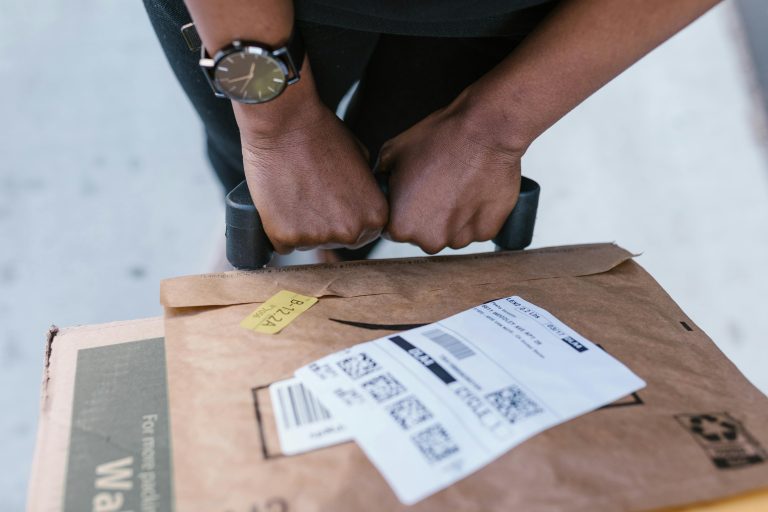RFID Asset Tracking: Hidden Benefits Most Companies Miss in 2025
RFID asset tracking has revolutionized modern asset management and inventory management. Organizations report a 20% boost in productivity after they start using this system. This digital transformation has redefined how companies of all sizes track their assets with remarkable precision. Businesses lose about 5-7% of their total inventory value each year due to theft and loss. This makes effective tracking systems more important than ever.
RFID tracking system works as a smart system that gives businesses complete control over their resources. Companies achieve seamless asset management when they combine RFID tags with detailed tracking systems. The numbers tell an impressive story – organizations can reduce their asset lifecycle management costs by 30% within two years of using this technology.
The RFID tracking software delivers up-to-the-minute updates about asset location and status. This makes inventory management and asset maintenance quick and straightforward. Many companies use simple RFID asset tracking systems just to control inventory. They often overlook several hidden benefits that could improve their operations. This piece explores these untapped advantages and shows how businesses can use them to get the most from their RFID technology investment.
RFID Asset Tracking
![]()
Real-Time RFID Asset Tracking: Visibility Beyond Location
RFID asset tracking system today goes way beyond just finding where things are. Advanced RFID systems give you a complete view of how assets are managed and their condition monitoring at the same time. Companies that use these systems see major improvements in how well they use and maintain their assets.
RFID Asset Tracking Tags for Condition Monitoring
Many people overlook how valuable modern RFID tags can be for monitoring environments. Old RFID systems were “environmentally blind” – they could spot assets but couldn’t tell you anything about their surroundings. This created big problems for temperature-sensitive items like medicines, food, and quality-controlled processes.
Today’s RFID tags can track temperature, humidity, light exposure, and shock levels. This feature helps cold chain logistics the most, where automatic compliance records replace manual temperature checks.
RFID adhesive labels, for example, are one solution for a unique identification. These labels, equipped with RFID tags, offer effective management and adapt to any context. Thanks to fixed or mobile RFID reading points, it is possible to accurately track any product at every stage of the process.
The result is lower labor costs and better regulatory compliance. Healthcare asset tracking uses these sensors to detect contamination in areas with strict pharmaceutical controls.
Companies just need better visibility into products that might spoil, break down, or become dangerous. Standard RFID systems can’t provide this without major changes to their reliable setup. Active RFID tags work best here since they have batteries to power extra sensors. These batteries typically last three to five years before you need to replace them.
Usage Pattern Tracking with RFID Asset Management Software
Because of the digital transformation of production processes, RFID technology allows real-time monitoring of production progress, from raw materials to finished products. Measurements are performed automatically and with zero impact on operations, eliminating any possibility of human error. RFID solutions ensure complete and precise logistics traceability, enabling optimal management of resources and time.
RFID tracking software turns raw data into applicable information by studying how assets move and work overtime. This software lets organizations:
- Identify cost-saving opportunities through usage pattern analysis
- Improve predictive maintenance schedules based on actual use instead of fixed times
- Cut operational costs by using assets better
- Save money on replacements through smarter asset lifecycle management
Healthcare asset tracking settings benefit greatly from this technology. Nurses spend about 6,000 hours each month looking for equipment. RFID in hospitals tracking software helps hospitals study these patterns and place equipment where it makes the most sense.
These asset tracking systems blend with enterprise systems, which helps businesses make smart operational choices based on real-time data.
The mix of condition monitoring and usage pattern tracking paints a full picture of asset health and use. Simple location tracking just can’t match this level of insight.
RFID Security Features: Geo-Fencing, Alerts, and Compliance
Security plays a vital role in RFID asset tracking technology, but many organizations don’t use it to its full potential. RFID tracking systems offer strong security features that improve asset protection in organizations.
Geo-Fencing Alerts in RFID Asset Tracking Systems
Geo-fencing technology sets up virtual boundaries around specific areas. The system sends instant Geo-fencing alerts when tagged assets move past these invisible lines. Companies can act right away instead of finding out about security breaches later.
According to FactorySense, businesses that use RFID-based geofencing saw workplace injuries drop by 20% in just one year. The system can also trigger security measures like locking doors, shutting down equipment, or notifying security staff when someone breaks the rules. Logistics companies use these virtual boundaries to make sure shipments stay on their planned routes, and the system alerts them about any unexpected route changes.
Unauthorized Movement Detection Using RFID Readers
RFID readers are placed at key points in facilities to keep track of asset movements. The system spots items that leave their assigned areas right away. Security teams can catch theft attempts or unauthorized movement detection as they happen. RFID solutions work naturally with existing security systems to manage risks better. RFID tags are hard to damage or remove, which makes them safer than regular barcode labels.
Healthcare facilities rely on this movement detection to protect important medical equipment and find patients quickly during emergencies.
Audit Trails and Access Logs for Compliance
RFID systems create detailed records that show when, where, and how assets move throughout their lifecycle. These complete records are a great way to get proof during compliance & audit trails or security investigations.
Companies that handle sensitive data use active RFID tags to watch hard drives waiting to be thrown away. This helps prevent data leaks and possible fines or lawsuits. Security teams can also look back at how visitors moved through their facilities, which helps with security audits and spots possible exposure to sensitive areas.
Operational Gains Hidden in the Data
RFID systems generate data with valuable operational insights that organizations often overlook. RFID-generated information creates powerful opportunities to streamline operations. Companies can prevent equipment failures and optimize resource allocation with this data.
If a system automatically counts what enters and exits your logistics docks, it keeps everything under control and saves time by passing the information directly to the management systems. RFID technology optimizes and automatically manages every process within the warehouse, saving time and resources: finding the product we’re looking for amidst others, or tracking every single movement within the warehouse, ensuring the location of each item with extreme precision.
Automated Maintenance Scheduling Via RFID Data
RFID technology makes maintenance processes simpler through automated maintenance scheduling of schedules and compliance requirements.
Organizations can schedule maintenance based on actual asset conditions rather than arbitrary timelines.
Assets carry their detailed maintenance history through RFID tags, which eliminate file searches and memory dependence. The system alerts technicians when specific usage thresholds are reached, so they can fix issues before equipment breaks down. Equipment lasts longer, safety improves, and productivity stays high with this proactive approach.
Operational Insights: Reducing Downtime with Predictive Analytics
Companies that use RFID-enabled predictive maintenance see major drops in unexpected equipment failures. RFID integration with IoT sensors monitors critical parameters like temperature, vibration, and usage patterns continuously.
Motion, proximity, or vibration-sensing RFID tags detect abnormalities that indicate potential equipment failure. Maintenance teams can schedule repairs at the best times with these immediate insights, which reduces equipment downtime and extends asset life.
Hospitals benefit greatly from this capability, which helps cut down the 6,000 hours nurses spend monthly looking for equipment.
Operational Insights: Improved Asset Utilization Through Movement History
RFID asset tracking systems record movement patterns that help organizations learn about usage trends and find underused resources. Managers spot unused or misplaced equipment quickly and rotate assets effectively. Equipment with low usage rates can move to busier areas where more is needed. Better Asset Utilization, lower operational costs, and fewer unnecessary purchases result from this optimization. These analytical insights help drive continuous operational improvement and smart decision-making throughout the organization.
Scalability and Integration That Future-Proof Your Business
RFID asset tracking systems must grow with business needs to succeed. A true lasting asset management strategy lies in making systems expandable and easy to integrate.
Smooth ERP Integration with RFID Asset Tracking Software
RFID asset tracking systems link directly to enterprise resource planning platforms. This makes automatic data collection and up-to-the-minute updates possible. The ERP integration removes manual entry errors and improves data accuracy between systems. Organizations can blend their RFID solutions with major ERP systems such as:
- SAP, Oracle, PeopleSoft, Banner, Sage, ServiceNow, and SunGard
These connections build a unified ecosystem where asset data flows naturally between platforms. To cite an instance, see AssetGather’s RFID Work Order Tracking System. It integrates with existing manufacturing processes and ERP systems, proving workflow sequences right and flagging anomalies.
Multi-Site Asset Tracking with Centralized Dashboards
Quuppa’s Cloud Infrastructure for Asset Control lets systems expand across multiple locations while adapting to changing organizational needs. The centralized dashboard gives complete visibility of all assets to streamline management and decision-making. Users can manage multiple sites at once and track assets across facilities with a few clicks. This method simplifies operations, cuts complexity, and improves system control through centralized asset management and version control.
Cloud-Based RFID Solutions for Multi-Site and Remote Control
Cloud-Based RFID Systems lets administrators manage physical access remotely without visiting premises. These IoT-enabled RFID Systems work for businesses of all sizes: from tracking assets in one location to managing them across global enterprises. The architecture supports instant data access from anywhere and works with various RFID devices including handheld scanners and fixed RFID readers. Organizations can quickly respond to market changes through immediate access to asset information with this flexibility.
Future-Proofing Asset Tracking: Scalability and Flexibility in 2025
RFID asset tracking technology does way more than simple inventory management. Companies often set up these systems without knowing their full potential beyond tracking locations. This piece shows why businesses should think about their RFID strategies differently as we move toward 2025.
Modern RFID tags now monitor sensitive assets’ conditions in detail, which changes how companies handle environmental factors. These tags work with specialized RFID software to help make informed choices that cut costs and make assets last longer. The system’s RFID security benefits like geo-fencing and movement alerts add protection layers that old tracking methods don’t match.
Every RFID setup generates valuable operational data ready to be put to work.
Smart companies use this data to predict when Predictive maintenance is needed, which cuts equipment downtime and helps assign resources better. The system pays for itself by stopping breakdowns before they happen and making better use of assets.
Maybe even more important is how modern RFID asset tracking systems grow with your business instead of becoming outdated tech. Cloud access, adaptable design, and smooth integration with company systems ensure lasting value. These systems adjust to new business needs while keeping data consistent across locations.
Smart asset tracking companies see past simple tracking when they set up RFID technology. They know real value comes from using every feature – from watching conditions to predicting problems. This detailed approach tackles today’s challenges and helps businesses handle tomorrow’s needs smoothly.
Read more: Retail Innovation Secrets 2025: AI, AR, Sustainability & GS1 Italy Insights





